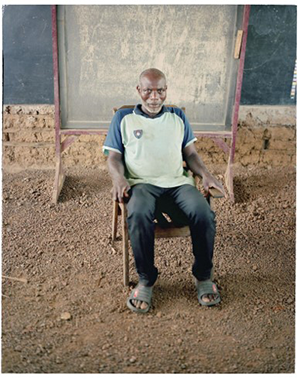Agroforestry keeps forests and cocoa-growing communities strong together
March 20, 2022
 Ouatara Shaka is a cocoa grower who’s lived in the Bossoha region of Côte d’Ivoire for almost 35 years. He and other growers like him originally moved to the region because they wanted to create a better future for themselves and their families. But while farming cocoa and coffee has helped them earn a living for their families, cocoa farmers such as Shaka are often exposed to a variety of external variables that make it hard to secure stable livelihoods and may push them to expand further into forest areas, converting new lands in order to meet the increased demand for cocoa and meet their livelihood needs, trapping them in a vicious cycle that creates long-term problems for forests and farmers alike.
Ouatara Shaka is a cocoa grower who’s lived in the Bossoha region of Côte d’Ivoire for almost 35 years. He and other growers like him originally moved to the region because they wanted to create a better future for themselves and their families. But while farming cocoa and coffee has helped them earn a living for their families, cocoa farmers such as Shaka are often exposed to a variety of external variables that make it hard to secure stable livelihoods and may push them to expand further into forest areas, converting new lands in order to meet the increased demand for cocoa and meet their livelihood needs, trapping them in a vicious cycle that creates long-term problems for forests and farmers alike.
“When I see someone destroying a forest, killing trees, it breaks my heart,” Shaka says. “Because when a whole piece of land is destroyed, if that parcel doesn’t get reforested, it becomes useless. Only trees enrich the soil.”
Increasing pressure from a wide range of sources, including logging and other crop production, threatens the ecological integrity of forests. Organizations and communities are looking to change that equation by helping to reforest areas while also further supplementing cocoa farmers’ incomes.
The concept is known as agroforestry, and Cargill and PUR Projet have been collaborating for the past three years to help advance it in communities such as Bossoha in Côte d’Ivoire. The project has been supported by several Cargill customers.
Since starting in 2019, the results have included:
- Planting nearly half a million trees
- Involving more than 4,600 farmers
- Incorporating 17 different tree species
- Working with three women-led community nurseries for seedlings
“Forests and farming can coexist. To nourish the world in a safe, responsible and sustainable way, they must. That’s the driving force behind this agroforestry partnership, which we have seen making a real difference,” said Sebastiaan van der Hoek, Cargill’s Climate and Land Use Advisor for the cocoa and chocolate business.
With the 1 for 20 Partnership and PUR Project, Cargill took the industry’s first steps in modelling different agroforestry scenarios to understand how this can support farmers to make a better living while helping protect our planet. Their joined-up analysis showed that - when done correctly - agroforestry “holds the potential to significantly shift farmer household income distributions” so that more households’ incomes rise above the poverty line. It can’t make the difference all on its own, but it can be part of a holistic approach.
That’s why Cargill and PUR Projet are extending their agroforestry program for three more years. Cargill helps fund the cost of seedlings, expertise on the ground, and direct engagement with cocoa-growing households.
To get a vivid picture of the impact of this work, watch the full video with Shaka below.
“Even if we will never see our primary forests again, we must plant new trees to restore harmony,” Shaka said. “If we plant trees, the shade will return, and if it rains, the soil will stay humid and fertile.”
He went on to add: “I am replanting trees for my children, to keep living from cocoa and provide a livelihood for my family. Trees are our common heritage, that’s why we must take care of them.”
With the help of PUR Projet, Cargill, and our additional partners, the Bossoha community and others in West Africa can make his vision a reality.
* Credits: Video: © Morgan Jouquand / Unforeseen Studio. Ouatara Shaka photography: Unforeseen Studio.
